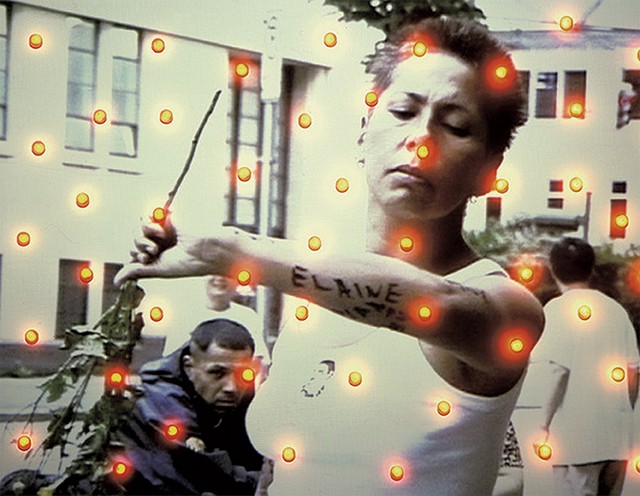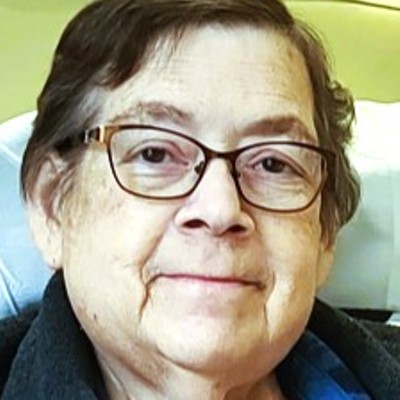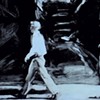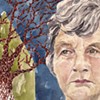click to enlarge 
- Howard Ursuliak | courtesy Morris and Helen Belkin Art Gallery
- "The Name and the Unnamed" installation still.
Just before crossing the Honoré Mercier Bridge into Montréal, one sees a billboard emblazoned with a picture of a young woman. In 2006, 24-year-old Tiffany Morrison went missing after crossing the bridge to a bar in the LaSalle borough on the northern side of the St. Lawrence River. Four years later, what remained of her body was found on the south side of the river, near the Honoré Mercier in the Kahnawake Mohawk Territory, a First Nation reserve.
Morrison was a Kahnawake native, a Mohawk, and a mother of one. Her unsolved murder is one of hundreds that have since been codified as an epidemic of missing and murdered indigenous women.
The inextricability of gender, geography and indigeneity — and the ongoing violence against women, the Earth and Native peoples — fuel the practice of contemporary artist Rebecca Belmore. Now on view at the Montréal Museum of Contemporary Art, "Rebecca Belmore: Facing the Monumental" presents a survey of her 30-year career, spanning photography, video, sculpture and installation. All are united by Belmore's commitment to her own body as a performative instrument of resistance.
The entrance to the exhibition acts like a warning: The sound of moving water is disconcertingly loud. Depending on the time, ripping and screaming noises or James Brown's "It's a Man's Man's Man's World" may emanate from invisible sources. The introductory exhibition text is in French, English and Belmore's mother tongue, Anishinaabemowin.
Like sound, the performances that define Belmore are ephemeral; only one, "Vigil," is fully documented within the show, presented in installation form as "The Named and the Unnamed." Belmore enacted this street performance in 2002 in a Vancouver neighborhood where the disappearances of more than 60 women were being investigated at the time.
In the 38-minute video loop, projected against a constellation of eerie orange light bulbs, Belmore performs a ritual of recognition and mourning. She screams each of the women's names, which are written in Sharpie on her body, dragging a thorned rose through her mouth after each. She then dons a red dress and proceeds to nail it to nearby objects: telephone poles, fences. Snaring herself in the urban landscape and then tearing herself free, Belmore is eventually left in only her white underwear and tank top. Scraps of blood-red fabric remain pinned to the city. Afterward, she joins the gathered audience, leaning against her parked pick-up as its speakers blast Brown's creed on man being "nothing, nothing without a woman or a girl."
The fiercely acerbic nature of "Vigil" and its building blocks — body as woman and self, mouth as megaphone, blood, water, nails, fiber and fabric, entrapment and freedom, suture and tear — resonate throughout the exhibition that follows. Woman's body remains at the thematic center even as Belmore oscillates between acts of refusal and absence (as in works where she appears with her back turned, face covered or eyes closed) and acts of full-frontal confrontation (as in the video installations "Fountain" and "March 5, 1819").
Belmore's large photographic print "Fringe" evokes an almost clichéd act of refusal: the irritated lover spurning her partner. Associated writings in the exhibition's resource library draw parallels between this image and the historical European figure of the odalisque. Paintings in the latter tradition usually feature the reclined, nude or semi-nude woman with her face showing. Here, a horizontal woman — Belmore? — turns completely away from the viewer's gaze, revealing a massive gash from shoulder to hip. Tiny red seed beads hang like rivulets from the wound's stitching.
Bodies continue to turn away: The photographic triptych "sister" shows a denim-clad figure seen from the back, her arms raised high from her sides as if she's about to be searched or crucified, or to fly away. In the digital prints "artist (No. 2)" and "X Mark," a figure wearing the reflective X of industrial work uniforms faces away from the camera toward the expansive backdrops of an orange-tarped construction site and a foggy, empty landscape, respectively.
In "State of Grace," a photograph of a young indigenous woman lying peacefully amid white sheets, is printed across what appear to be Venetian blinds. Her eyes are closed, her state ambiguous. Is she sleeping or dead? At peace or simply gone? The woman's image, in strips, flutters gently.
A paradox emerges in Belmore's use of gone-ness. The Native and female body is "gone" because of systematic historical erasure, physical and cultural. But that same body is also not fully present or visible, thereby refusing ownership. The two-screen video installation "March 5, 1819" speaks directly to the historical murder of indigenous women and Native lineages. The two-minute parallel projections present a fragmented contemporary reenactment of the colonialist abduction of Native woman Demasduit and the murder of her husband, Nonosabasut.
In the sculpture "Mixed Blessing," a figure crouches, bowing its head and surrounded by flowing black hair. The person wears a hoodie with intersecting texts that read "Fuckin Indian" and "Fuckin Artist." Viewers are able to circle the figure, engaging in the suspenseful game of discovering its face — which, it turns out, is completely hidden from view by more thick, black hair and a single red line of seed-bead "blood."
If blood is critical to Belmore's work, so is water. The video work "Fountain" is projected directly onto a streaming wall of water; in it, Belmore appears on a rocky, dramatic coastline, floundering and struggling in the ocean's waves. She finds her footing and emerges onto the shore, carrying a bucket of blood that she throws directly at the camera, washing the watery screen in red.
Three sculptures from the 2017 site-specific installation "Wave Sound" riff on one of Belmore's earliest works. She fashioned the surfaces of these massive aluminum cones after the geology of three Canadian coastal areas. Each was previously installed at its respective location, an invitation to passersby to listen to the ocean.
Before this relatively recent act of listening, however, Belmore performed an act of speaking. Not represented in the exhibition, her participatory work "Ayum-ee-aawach Oomama-mowan: Speaking to Their Mother" is a giant megaphone made of natural materials. Belmore made the work in 1991 as a response to the 1990 Oka Crisis, in which members of the Mohawk tribe engaged in a standoff with the Canadian government for 78 days to prevent their territory from being turned into a golf course. One of the bridges blockaded by natives of the Kanesatake, Kahnawake and Akwesasne reserves was the Honoré Mercier Bridge — where the body of Tiffany Morrison was found in 2010.
Belmore's deep magic is the fusion of her specific, flesh-and-blood body with the abstraction of the female indigenous body. You begin to assume each body is her body, even when it's not, or might not be. And you reflexively try to imagine the performances that certain objects came from, whether or not there was ever an associated performance. Belmore both fixates on and transcends the limitations of her identity with cutting anger and intensity. She draws attention to the dizzying interconnectedness of life and land — for better and for much, much worse.




















































